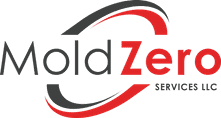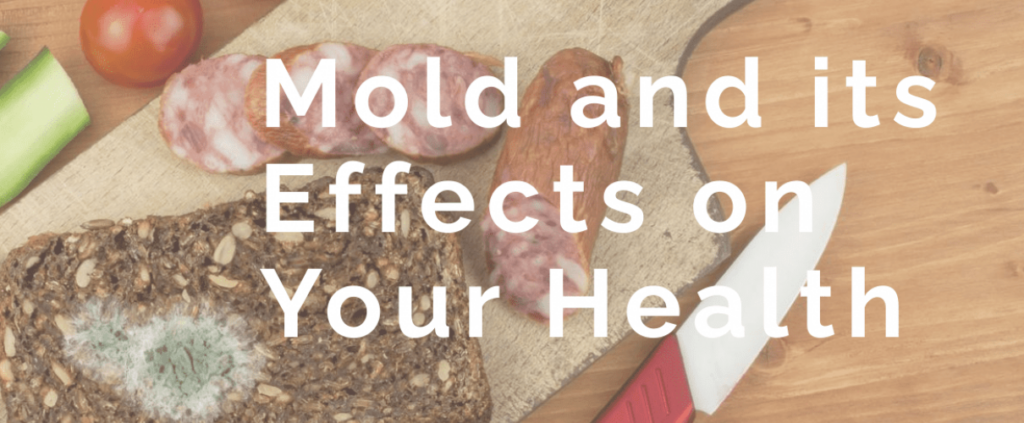Mold’s Effect on Occupant Well-Being in LA
Mold is a natural and essential part of the outdoor ecosystem, responsible for breaking down organic material. But when this microscopic fungus finds its way into our homes and properties, it becomes an unwelcome guest. Mold spores are invisible, floating in the air, and can easily enter through open windows, doors, or be carried in on clothing and pets. They can lie dormant for long periods, but when they land on a surface that has both moisture and a food source, they can begin to grow and form a colony.
For property owners in Los Angeles, our climate can sometimes contribute to mold issues. Coastal humidity, sudden rainy seasons, and even the condensation from our air conditioning systems can create the damp conditions mold loves. Left unaddressed, a mold issue can become a significant concern for your property’s structure and for the well-being of its occupants.
This guide is designed to be your comprehensive resource. We will cover how to identify mold, understand its life cycle, take a deep dive into its potential effects on occupant well-being, and detail the professional steps needed to address it correctly.
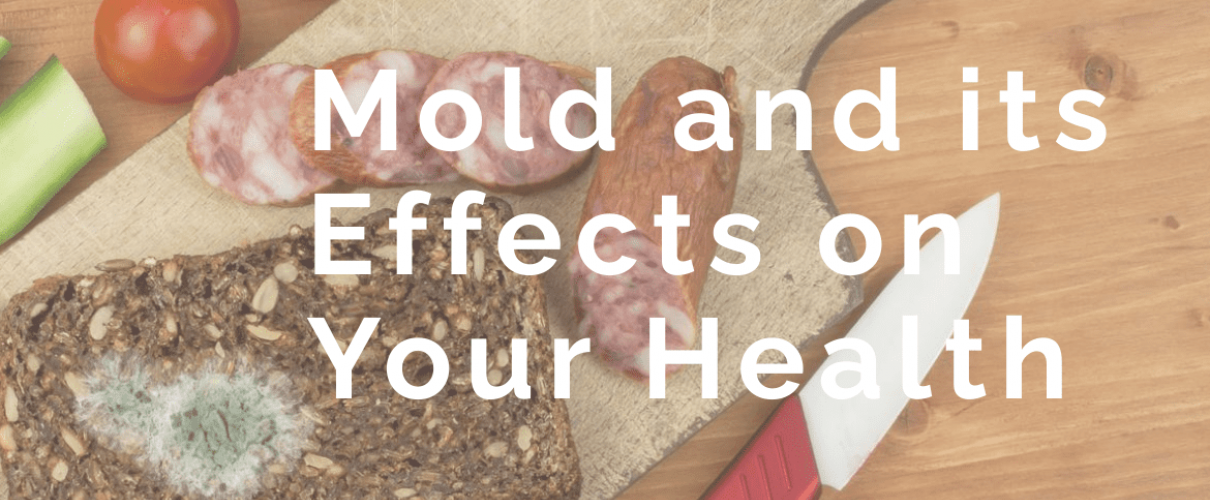
What Exactly is Mold?
Mold is not a plant, animal, or bacteria; it’s a member of the fungus kingdom. Its life cycle is simple but effective:
- Spore: It begins as a microscopic spore, which is essentially a seed, looking for a place to land.
- Growth: When a spore lands on a suitable spot—one with moisture and a food source (like cellulose)—it germinates.
- Colony (Mycelium): It grows into a visible colony, which is a network of thread-like structures called hyphae. This visible mass is what you see on walls or other surfaces.
- Reproduction: Once established, the colony produces and releases new spores into the air to repeat the cycle.
What Does Mold Eat?
Mold is not picky. It feeds on organic materials, which are abundant in every home. Common food sources include:
- The paper facing on drywall
- Wood studs and flooring
- Cotton fabrics
- Carpet backing
- Dust and dander (which contain organic matter)
A Note on “Black Mold” and Color
You will often hear “black mold” discussed with a great deal of alarm. While it’s true that some molds, like Stachybotrys chartarum, are black, it’s a common misconception that color alone indicates its level of concern. Molds can be green, brown, white, yellow, or black, and all types of indoor mold growth should be addressed with the same level of thoroughness. The color does not change the fact that you have mold growth that needs to be professionally remediated.
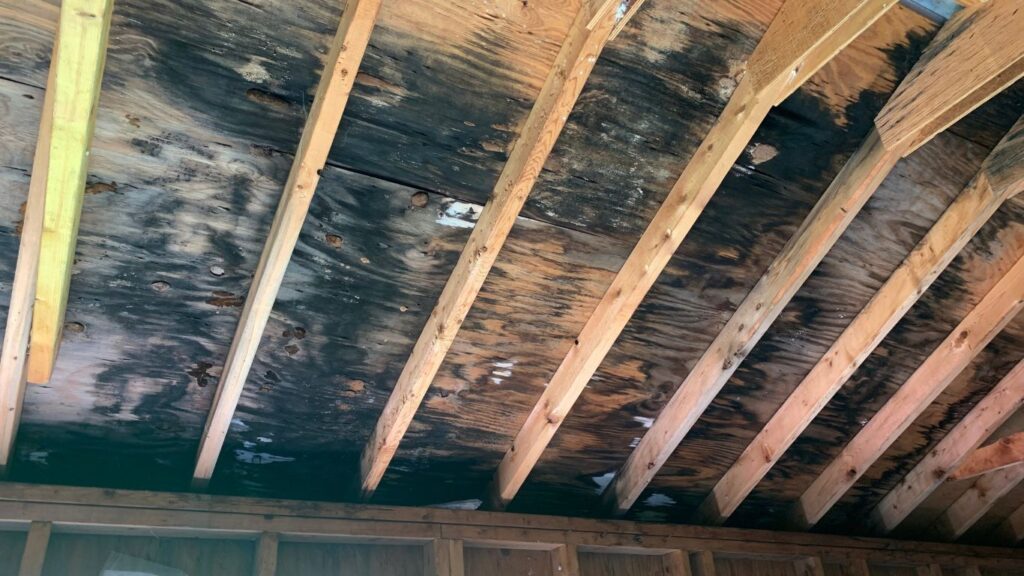
Mold vs. Mildew: What’s the Difference?
This is a common question. “Mildew” is a non-technical term often used to describe a specific type of mold that grows flat on surfaces. You typically see it as the powdery white spots on plants or the dark spots in your shower grout. “Mold,” on the other hand, is the broader term for all species of fungi that grow in colonies, which can often be fuzzy, slimy, or more substantial. For a homeowner, the distinction is minor: both are types of mold, both require moisture to grow, and both should be addressed.
The Conditions for Mold Growth
Mold only needs a few key things to thrive, which are all readily available in many homes:
- Mold Spores: They are a natural and unavoidable part of the air everywhere.
- Food Source: Wood, paper, dust—all are plentiful indoors.
- Oxygen: Also unavoidable.
- Moisture: This is the single most important factor and the only one you can control.
Mold is surprisingly resilient. It doesn’t need a flood; a small amount of persistent moisture from a slow leak, high humidity, or condensation is all it takes. While cold temperatures can slow its growth, mold can remain dormant and grow again when conditions improve. It can also grow in cool environments like a poorly insulated wall. However, mold cannot grow in a truly dry environment. This is why moisture control is the foundation of all mold prevention.
How to Identify a Mold Problem in Your Property
Sometimes a mold problem is obvious, but often it’s hidden. You can frequently detect an issue before you ever see it.
- Musty Odor: This is the most common initial sign. If you notice a persistent musty, damp, or earthy smell, especially in a specific room or area (like a cabinet or closet), you likely have mold, even if it’s behind a wall.
- Visible Growth: You may see visible patches or stains. These can be fuzzy, slimy, or powdery. Don’t dismiss small spots in shower grout or on window sills—they can indicate a larger, hidden moisture problem.
- Water Damage Signs: Look for clues that moisture is present or has been in the past. This includes discolored-looking walls, peeling or bubbling wallpaper, warped wood, or “efflorescence” (a white, powdery substance on concrete or brick walls).
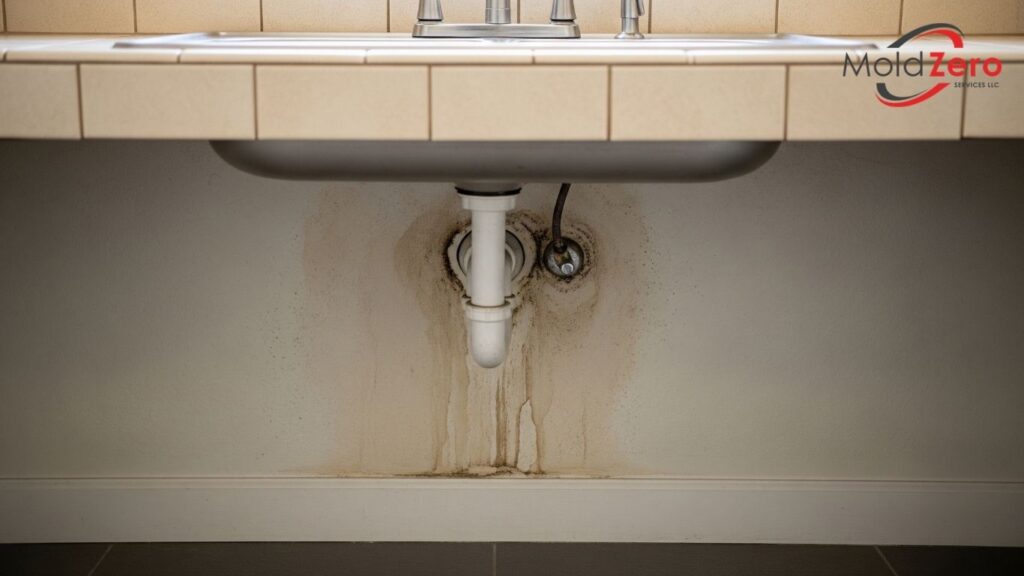
Common Hiding Spots: Where to Look
Because mold loves moisture and darkness, it often grows out of sight.
- Bathrooms: Under sinks, behind toilets (especially the tank), in shower and tub enclosures, around caulking, and in unvented exhaust fans.
- Kitchens: Under the sink (especially around the garbage disposal and dishwasher connections), behind the refrigerator (from icemaker lines), and inside cabinets.
- Basements & Crawl Spaces: These are prime locations due to ground moisture, leaks, and high humidity.
- Attics: Look for dark stains on the underside of the roof sheathing, which can indicate a roof leak or poor ventilation (trapped humidity).
- Windows & Doors: Condensation on window sills can provide enough moisture for mold to grow.
- HVAC Systems: Air conditioning units and ductwork can harbor mold due to condensation. If you smell a musty odor only when the AC is on, this is a likely culprit.
- Anywhere You’ve Had a Leak: Behind walls where a pipe has leaked, in carpet and padding after a flood, or under flooring.
A Deeper Look: Mold Exposure and Occupant Well-Being
This is the primary concern for many homeowners, and rightly so. When mold grows, it releases spores and other substances into the air to reproduce. It’s this release that can affect the indoor environment and the people living in it.
How Exposure Occurs
Exposure to mold can happen in three primary ways:
- Inhalation: This is the most common pathway. Breathing in airborne spores can cause irritation in the respiratory system.
- Skin Contact: Touching moldy surfaces can lead to skin irritation or rashes in some individuals.
- Ingestion: This is less common in a home environment, but can happen if mold grows on food.
Common Symptoms Associated with Mold Sensitivity
For individuals with existing sensitivities, mold exposure can lead to a range of uncomfortable, allergy-like symptoms. This is the body’s natural response attempting to manage foreign particulates. These reactions can vary greatly from person to person in both type and severity.
Commonly reported symptoms include:
- Runny Nose and Congestion: The nasal passages become irritated and produce excess mucus to try and trap and flush out the spores.
- Eye Irritation: Itchy, watery, or red eyes are a common complaint, as the spores can be a direct irritant to the mucous membranes of the eyes.
- Sneezing: A reflexive action to forcibly clear spores and irritants from the nasal passages.
- Coughing (often dry and persistent): The body’s way of trying to clear the lower respiratory tract—the throat and lungs—of irritants.
- Sore Throat: A scratchy or sore throat can result from postnasal drip or from the spores directly irritating the throat lining.
- Skin Rash: Direct contact can cause atopic dermatitis or other rashes in sensitive individuals, appearing as dry, scaly, or itchy skin.
- Headaches: Some people report experiencing headaches or migraines when in environments with mold growth, potentially related to sinus inflammation or other sensitivities.
- Fatigue: While less direct, some individuals report feeling unusually tired or lethargic, which can be associated with the body’s persistent response to an environmental irritant.
If you or your family members are suffering from one or more of these symptoms for a prolonged period, especially if they seem to improve when you leave the house and worsen when you return, we suggest you seek advice from a medical professional and investigate your home for environmental factors like mold.
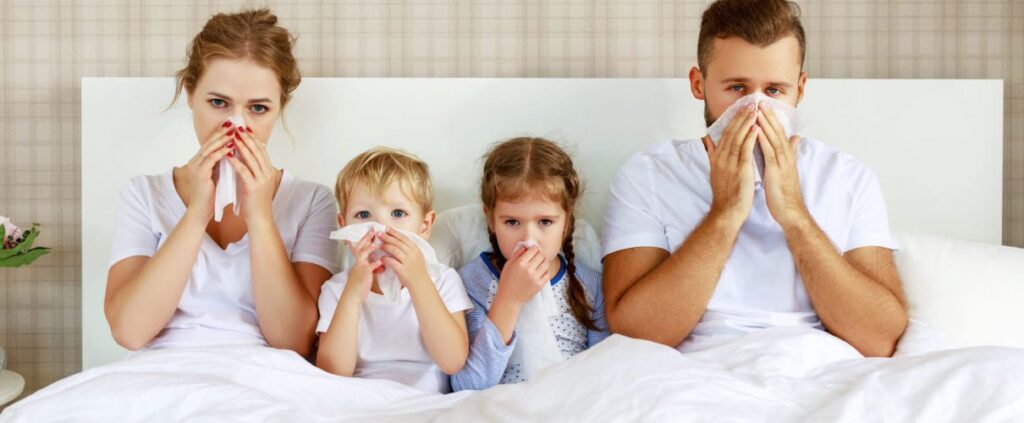
Who is More Susceptible to These Sensitivities?
While anyone can be affected, some groups are more likely to experience these reactions:
- People with Known Allergies: Their immune systems are already primed to overreact to environmental triggers. Mold spores are a well-known allergen, and exposure can trigger a full-blown allergic response (hay fever-like symptoms) as the body releases histamines to fight what it perceives as an invader.
- People with Asthma: This is a significant concern. For those with asthma, inhaling mold spores is a known and powerful trigger for asthma attacks. The spores can irritate the airways, causing them to swell and constrict (bronchoconstriction), leading to wheezing, chest tightness, and difficulty breathing.
- Individuals with Compromised Immune Systems: This group needs to be particularly cautious. Because their body’s natural response mechanisms are not at full strength, they may have a harder time dealing with environmental irritants, and their medical providers often advise a high degree of caution.
- Infants, Children, and the Elderly: This group is often more sensitive due to developing or aging respiratory systems. Their bodies may be more easily overwhelmed by a high concentration of airborne particulates.
Understanding Mycotoxins
You may read about mycotoxins, which are certain chemical compounds that some (not all) types of mold can produce under specific conditions. These substances are a complex subject of ongoing scientific and medical research to understand their full range of effects.
However, from a property owner’s perspective, this complex topic can be simplified: the presence of mold, regardless of its type or whether it’s producing mycotoxins, is the core problem. The solution is not to test for specific mycotoxins but to address the mold growth itself. Thorough, professional mold remediation resolves the issue by addressing the source.
What About My Pets? Our “Family First” Philosophy
Our “Family First” philosophy extends to our furry family members, too. Pets can be affected by mold in the same ways humans are—through inhalation and skin contact. In many ways, their exposure can be even greater. They spend most of their time at home, often have their noses to the ground, and may explore damp, out-of-the-way areas like basements or crawl spaces where mold is common.
Signs that your pet might be affected include:
- Persistent sneezing, coughing, or wheezing
- Watery eyes or a runny nose
- Excessive scratching, skin irritation, or bald patches
- Unusual lethargy or a change in appetite
If you notice these signs, it’s a good idea to consult your veterinarian to rule out other causes and to check your home for environmental issues, including mold. Addressing the mold supports a better indoor environment for all occupants, on two legs or four.
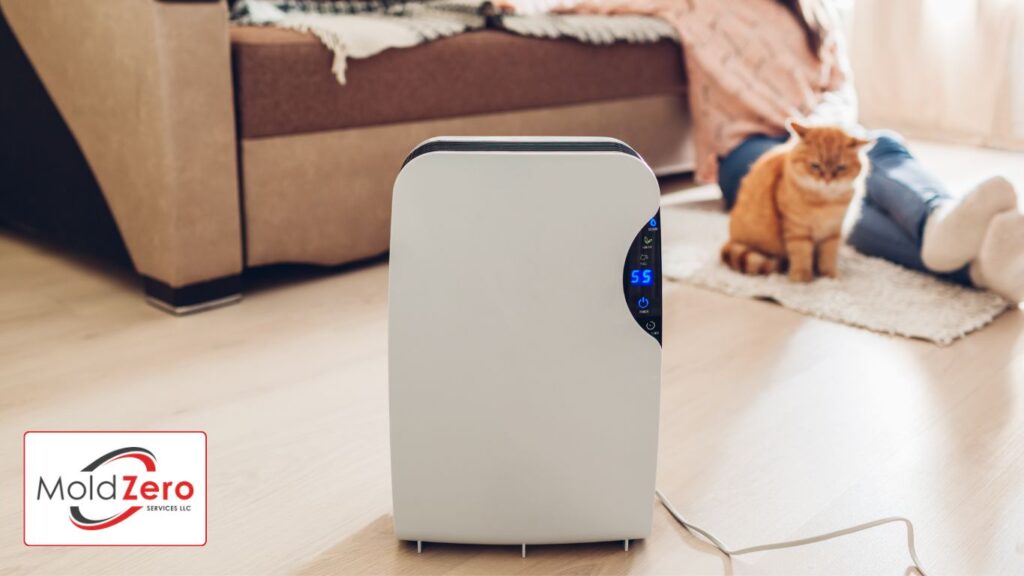
Why Mold Needs to Be Addressed Quickly
Addressing mold promptly is about protecting your property and supporting the well-being of its occupants.
- Property Damage: Mold isn’t just a stain; it’s an active organism that is “eating” the organic material it’s growing on. Over time, it can weaken drywall, rot wood studs, and compromise the structural integrity of your home. What starts as a small spot can turn into a major repair project.
- Occupant Well-Being: As detailed above, the longer mold is present, the longer occupants are exposed to the spores it releases, which can lead to persistent irritation and allergic reactions in sensitive individuals.
- Property Value & Real Estate: A mold issue is a major red flag in a real estate transaction. It can derail a sale or significantly lower your property’s value. Addressing it properly before you list your home, complete with post-remediation verification from a third-party lab, is a crucial investment.
How to Prevent Mold Growth in Your Home: A Proactive Guide
Prevention is focused on one key goal: controlling moisture. Since you can’t eliminate mold spores or their food sources, you must eliminate the water they need to grow.
1. Control Moisture & Humidity
- Use a Hygrometer: These inexpensive devices measure your home’s indoor humidity. Keep it ideally below 50%.
- Run Your AC/Dehumidifier: Especially during “June Gloom” or after heavy rains, your air conditioner is a great dehumidifier.
- Use Ventilation: Run your bathroom exhaust fan for at least 30 minutes after every shower. Use your kitchen exhaust fan when cooking or running the dishwasher. Ensure your clothes dryer vents directly outside and that the vent line is clear of lint.
2. Inspect and Repair Leaks Promptly
- Routinely check under sinks, around toilets, and by your water heater for any signs of dripping or water stains.
- A small drip can create a huge mold problem inside a cabinet or wall. Addressing any water leak within 24-48 hours is critical to prevent mold from starting.
3. Manage Condensation
- In cooler weather, you may notice “sweat” on your windows. This condensation is a prime moisture source. Wipe down window sills and frames regularly and try to increase airflow in these areas.
4. Check Landscaping and Gutters
- Ensure the ground around your home slopes away from the foundation.
- Keep your gutters clean and ensure downspouts are extended, directing water far away from your house to prevent it from seeping into your basement or crawl space.
5. Clean and Maintain Your Home
- Regularly clean and vacuum (with a HEPA-filter vacuum, if possible) to reduce the dust and organic matter that mold can feed on.
- When renovating, consider using mold-resistant drywall and paint in high-moisture areas like bathrooms.
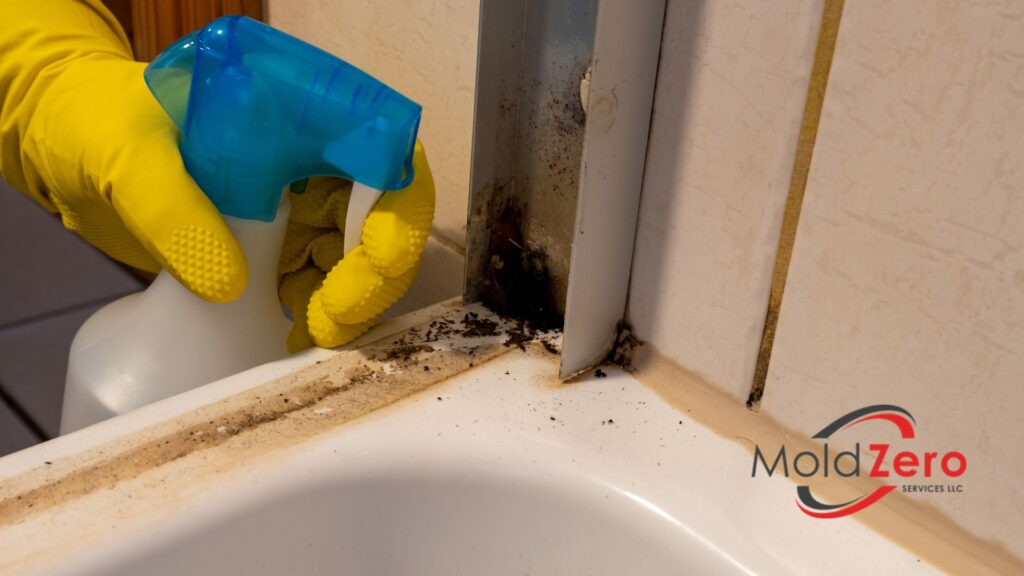
The Mold Remediation Process: Why DIY is Not the Answer
If you have a very small amount of mold (a few square inches on a hard, non-porous surface like tile), you might be able to clean it with soap and water.
However, for any significant, widespread, or porous-surface mold issue (like on drywall), attempting to remove it yourself is not advised. It often makes the problem worse.
- Risk 1: Spreading the Problem: The biggest danger. Trying to scrape, sand, or even wipe dry mold can release billions of spores into the air. A standard household vacuum or fan will act like a “spore cannon,” spreading the contamination throughout your entire home via your HVAC system.
- Risk 2: Not Addressing the Source: Spraying a household cleaner on a moldy wall only cleans the surface. It does not penetrate porous materials like drywall or wood, and it does absolutely nothing about the spores in the air. The mold will simply return, often in a few weeks.
- Risk 3: Improper Protection: Professionals use specialized personal protective equipment (PPE). Homeowners attempting DIY risk significant exposure to a high concentration of spores.
This is why a professional, like a NORMI Certified expert, is essential. True remediation involves containment, source removal, and air cleaning.
A Common Mistake: Why You Can’t Just Paint Over Mold
It’s tempting to think a can of “mold-blocking” paint will solve the problem. This is a temporary cosmetic fix that can actually make the problem worse. The mold is still alive underneath the paint. It will continue to feed on the drywall paper and will eventually feed on the paint itself, causing the new paint to bubble, crack, and peel. The moisture source and the mold colony must be properly addressed first.
The Mold Zero Difference: A Better Remediation Method
Traditional mold removal has a reputation for being a messy, disruptive, and costly nightmare. It often involves tearing out large sections of drywall and wood, turning your home into a construction zone for days or even weeks.
At Mold Zero, we knew there had to be a better way. We use an advanced process that is minimally invasive, fast, and highly effective.
Our advanced fogging solution is the cornerstone of our service. This isn’t a simple spray bottle. It’s an atomized fog that penetrates deep into surfaces and fills the entire volume of a room, reaching into nooks, crannies, and porous materials that conventional techniques simply cannot. It neutralizes mold on contact.
Our Unique 5-Step Process Explained
Our process is designed for maximum effectiveness and minimal disruption to your life.
- Step 1: Free, Comprehensive InspectionOur NORMI Certified expert visits your Los Angeles or San Marino property to conduct a thorough visual inspection. We identify the visible mold, find the moisture source, and use our expertise to assess the full scope of the issue. We then provide you with a clear, detailed, no-obligation quote.
- Step 2: Containment & PreparationBefore any treatment, we establish containment barriers to completely isolate the affected area. This is critical to preventing any cross-contamination to other parts of your property. Our minimally invasive process means we don’t need to do major demolition in most cases.
- Step 3: Advanced Fogging TreatmentWe deploy our advanced, high-penetrating fogging solution. This fog neutralizes mold on contact, not just on surfaces but also in the air itself. It gets inside porous materials like drywall and wood, addressing the problem at its roots.
- Step 4: Air Scrubbing & Final Wipe-DownAfter the fogging has done its work, we use industrial-grade air scrubbers with HEPA filters to remove any remaining airborne particulates. Our technicians then perform a final wipe-down of surfaces in the area to address any residue.
- Step 5: Third-Party Post-Treatment VerificationThis is our ultimate commitment to you and our “proof of work.” We arrange for an independent, third-party lab to conduct post-remediation testing. This unbiased report verifies that the remediation was successful and the indoor environment has been returned to a normal condition. This is your guarantee of a job done right.
This entire process is backed by our 1-Year Guarantee. That’s how confident we are in our method.
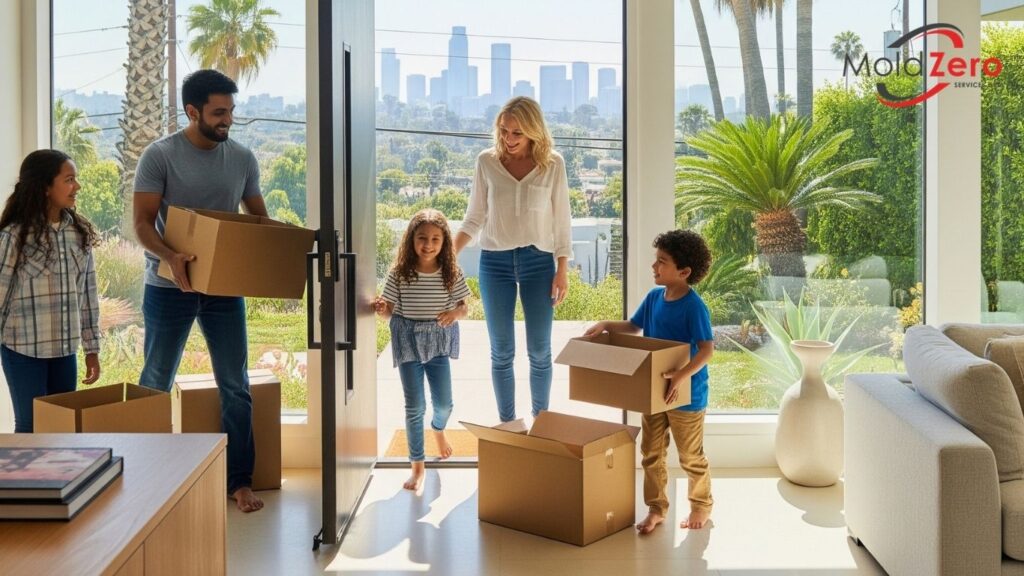
Your Trusted Mold Experts in Los Angeles & San Marino
For property owners in Los Angeles, San Marino, Pasadena, Brentwood, and anywhere in the greater LA area, Mold Zero is your local, trusted partner. We are not a faceless franchise; we are experts who live and work in your community.
With over 1,000 mold remediation jobs completed, we have the experience to handle any mold issue, from a small residential bathroom to a large commercial property. We understand the challenges of dealing with mold and are committed to providing a comprehensive, efficient, and reliable solution.
Don’t let a mold issue compromise your property or your peace of mind. Contact Mold Zero today for a free, no-obligation inspection and quote.
Call us now at (626) 671-8885 to speak with a specialist, or fill out our online form for a prompt callback.
In-Depth Mold Growth FAQs
Can mold impact my well-being?
For individuals with sensitivities, allergies, or asthma, mold exposure can trigger a range of responses, including respiratory irritation, coughing, sneezing, and eye irritation. It’s always best to address a mold issue promptly to support your indoor environment.
How can you tell if your home has mold?
The most common signs are a persistent musty smell or the visible appearance of mold growth, which can look like fuzzy, slimy, or powdery stains in green, black, brown, or white.
How long does the Mold Zero process take?
This is one of the key benefits of our advanced process. Most residential jobs are completed in just hours, not days. This minimizes disruption to your life, and you can often return to your property the very same evening.
Is your fogging process used around my family and pets?
We take our “Family First” philosophy seriously and use solutions we would trust in our own homes. While we do require that all occupants (including pets) are not present during the brief fogging application, the property is ready for re-entry just a few hours later.
What does NORMI Certified mean?
NORMI (National Organization of Remediators and Mold Inspectors) is a leading, respected certification body for our industry. A NORMI Certified professional has undergone extensive training and passed rigorous exams, demonstrating a high level of expertise in mold assessment and remediation protocols. It’s a key sign that you are working with a qualified and trustworthy expert.
Can mold return after treatment?
Mold is a natural part of our environment, and spores will always be present. A professional remediation job addresses the active growth and removes the contamination. However, mold can return if a new moisture problem appears (like a new plumbing leak or a flood). This is why we emphasize fixing the moisture source as the most critical step and why our 1-Year guarantee provides you with lasting peace of mind.
